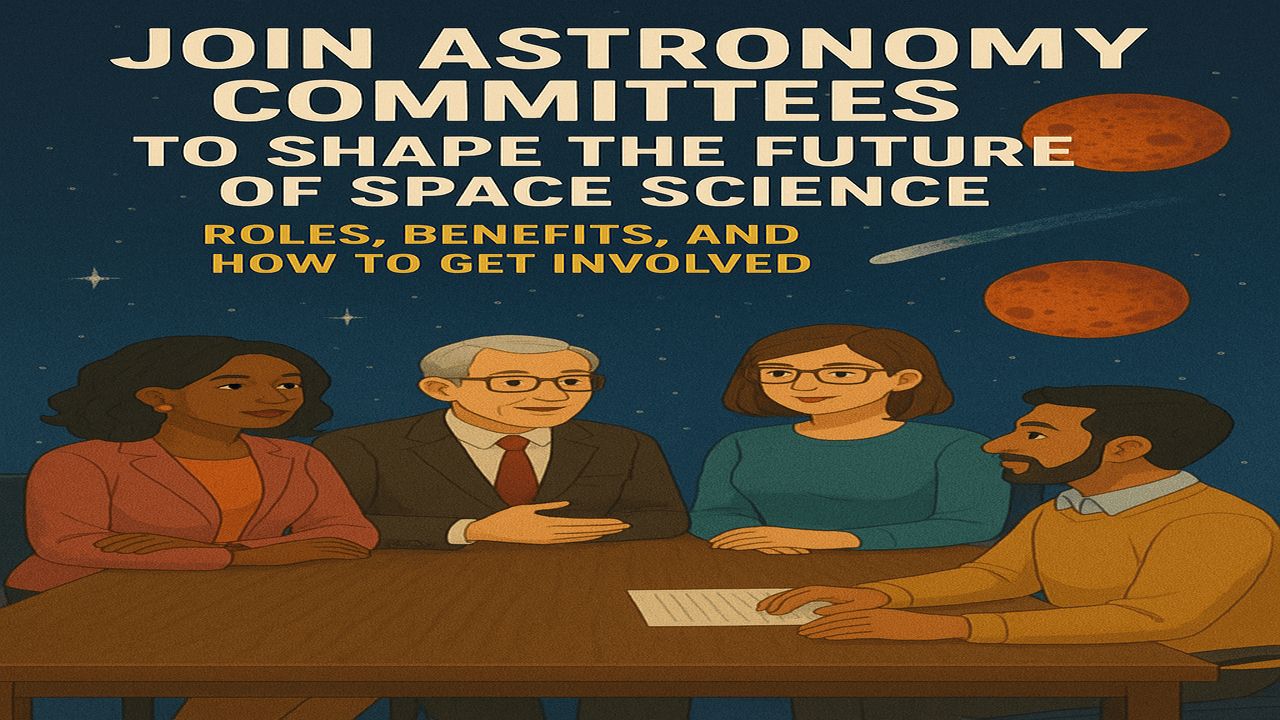Behind every successful astronomy initiative—whether it’s a skywatch event, science fair, observatory development, or space policy discussion—is a dedicated team of individuals driving strategy, planning, and action. These individuals form astronomy committees, the backbone of community engagement, education planning, and institutional growth in the field.
Whether you’re an educator, student, researcher, or enthusiast, joining a committee gives you a seat at the table where real decisions are made. It’s a way to contribute more than observation—it’s a chance to lead, shape, and amplify the impact of astronomy in your region or country.
What Is an Astronomy Committee?
An astronomy committee is a group of individuals appointed or elected to guide the strategic direction, program development, and public outreach activities of an astronomy organization, observatory, club, or national institution.
 South Africa Weekend Weather September 2025 – Provinces Alerted of Dangerous Rain Conditions
South Africa Weekend Weather September 2025 – Provinces Alerted of Dangerous Rain Conditions
Committees can exist at:
- Local Club Level (e.g., planning star parties, managing membership, running school outreach)
- Institutional Level (e.g., universities, planetariums, or science NGOs)
- National or International Level (e.g., IAU, national science councils, research initiatives)
Committees usually focus on:
- Event and program planning
- Policy and curriculum advocacy
- Public science communication
- Research collaboration coordination
- Diversity and inclusion in STEM
Who Should Join?
You don’t have to be a scientist to join an astronomy committee. In fact, diversity in background, skill set, and thinking is what makes committees strong. Common profiles include:
- Astronomers and Astrophysicists
- Educators and Professors
- Event Planners
- Graphic Designers / Media Professionals
- Students and Young Researchers
- Community Volunteers
- STEM Advocates
- Tech/IT Support People
If you have the motivation to contribute to the growth of astronomy, there is a place for you.
How to Join an Astronomy Committee
1. Identify the Organization
Look into astronomy clubs, universities, observatories, or NGOs in your region. Visit their website and locate a “Committee” or “Volunteer” section. Many call for new members annually or per semester.
2. Understand Their Mission
Each organization has different goals—some focus on education, others on research or outreach. Read their publications or past event reports to understand their mission before applying.
3. Express Your Interest
Write a concise email expressing why you want to join, what skills you bring (e.g., project management, teaching, social media, fundraising), and how much time you can commit.
4. Start as a Volunteer
If full committee membership is not open, offer to volunteer for an upcoming event or campaign. Committees often invite reliable volunteers into their official working group.
5. Attend Meetings and Contribute
Be proactive. Participate in brainstorming, offer ideas, and show your reliability. Committees value doers over talkers.
Typical Committee Roles
- Program Coordinator: Designs and schedules events, workshops, and lectures.
- Outreach Manager: Plans school visits, public engagement, and community sessions.
- Content & Curriculum Lead: Develops educational materials and guides.
- Operations Officer: Handles logistics, venue bookings, and permissions.
- Finance Coordinator: Prepares budgets, funding proposals, and handles grants.
- Social Media Lead: Manages visibility through Instagram, YouTube, Twitter, etc.
- Diversity & Inclusion Officer: Ensures all programs are inclusive, multilingual, and accessible.
What You Can Gain
✅ Leadership Experience
 September 2025 R12,500 Youth Grant – Application Window Open With Step-by-Step Instructions
September 2025 R12,500 Youth Grant – Application Window Open With Step-by-Step Instructions
Committees allow you to take ownership of major projects and build decision-making capacity.
✅ Networking Opportunities
You’ll work closely with astronomers, scientists, educators, and funders, opening doors to collaboration.
✅ Professional Growth
Committee work looks great on CVs, especially if you’re in academia, education, or non-profits.
✅ Personal Fulfillment
Nothing beats the feeling of seeing hundreds of people turn up for a stargazing event you helped organize.
✅ Visibility in the Astronomy Ecosystem
Regular committee members often get invited to panels, conferences, or media interviews.
Common Challenges and Solutions
| Challenge | Solution |
|---|---|
| Conflicts or delays in decision-making | Set clear roles and deadlines |
| Limited funding | Learn proposal writing and seek small grants |
| Low volunteer retention | Keep meetings fun, recognize contributions |
| Burnout | Distribute tasks equally and encourage breaks |
Example: A Local Astronomy Club Committee Structure
- Chairperson: Leads meetings, aligns goals
- Secretary: Keeps minutes, records, sends notices
- Outreach Head: Plans school and community events
- Technical Officer: Manages telescopes, equipment
- Social Media Head: Handles online presence
- Student Representative: Brings youth perspective
Even small groups can be organized effectively with a clear structure.
Virtual Committees Are Growing
Many astronomy organizations now allow virtual participation via Zoom or email. This makes it easier for people from remote areas to join and contribute.
Examples:
- International Astronomical Union (IAU) education outreach committees
- Global Hands-On Universe projects
- Citizen science coordination groups (like Globe at Night)
Astronomy is expanding beyond observatories and into communities, classrooms, and mobile devices. The decisions made in astronomy committees today will shape how future generations view the universe.
If you’re passionate, committed, and willing to contribute, joining a committee is your chance to lead from the front. Start local, stay consistent, and soon you’ll be at the center of major astronomical change.
So don’t just attend the events—organize them. Don’t just admire stargazers—build platforms for them. The cosmos needs more leaders. Join the committee, and be one.




